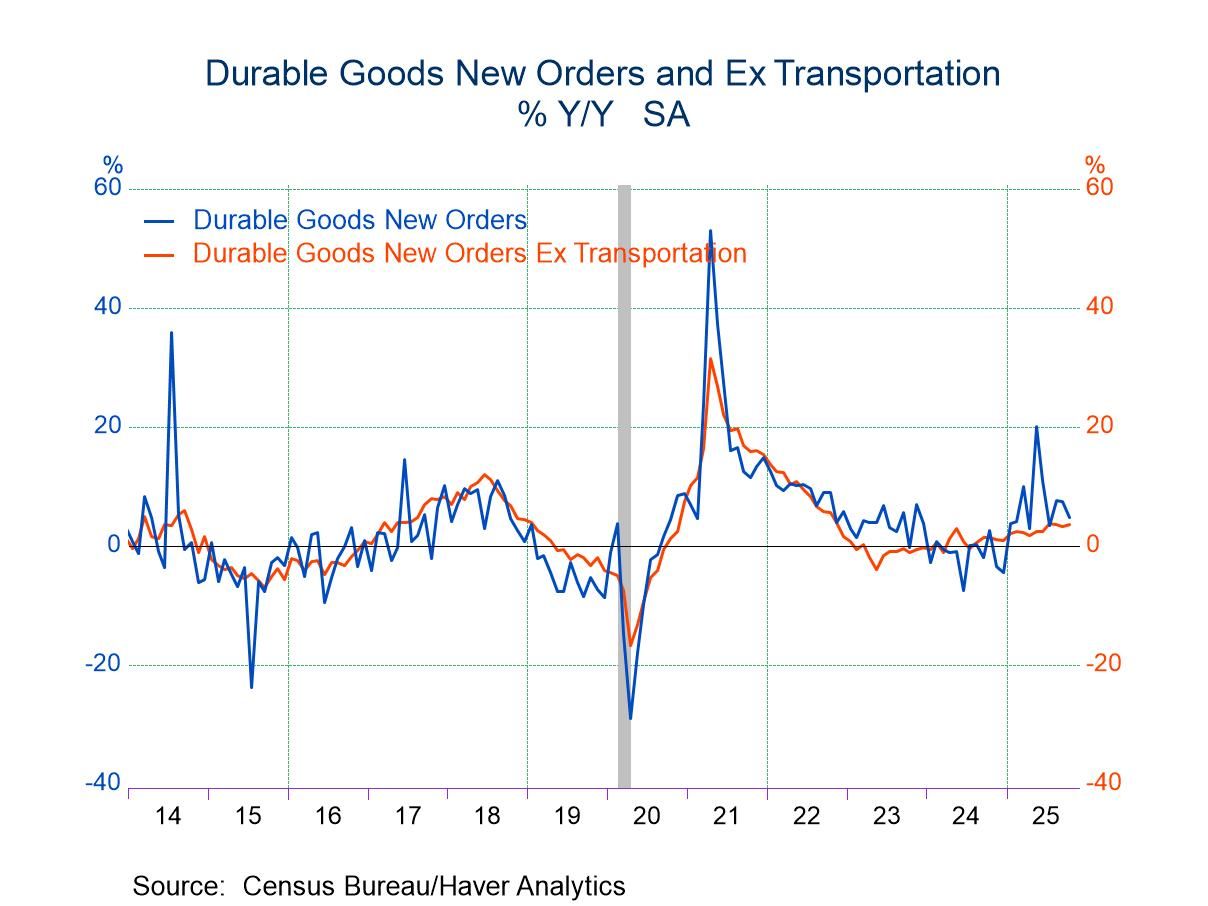The price for a gallon of regular gasoline increased to $3.44 (-9.0% y/y) last week, the third consecutive week of increase from the $3.29 low. Nevertheless, prices remained below the $3.78 per gallon peak reached in February of last year. Haver Analytics constructs seasonal factors to account for seasonal volatility. The adjusted price ticked lower last week at $3.55 per gallon, down from $3.94 in February last year.
The per barrel cost of WTI crude oil also strengthened to $102.74 (9.0% y/y) last week but remained lower than the $108.67 high in early September. Yesterday, prices edged higher to $102.82 per barrel. Brent crude oil prices also rose last week to $109.83 per barrel (-5.0% y/y) and yesterday held steady.
Natural gas prices moved lower last week to $5.98 per mmbtu but remained up sharply from prices twelve months ago. Yesterday, prices increased to $6.28 per mmbtu.
The demand for all petroleum products increased 3.0% y/y last week. Gasoline demand fell 1.1% y/y. Residual fuel oil needs, used for heating, strengthened 11.4% y/y while distillate demand jumped rose 4.4% y/y. Inventories of crude oil and petroleum products fell 3.4% y/y.
The energy price data are reported by the U.S. Department of Energy and can be found in Haver's WEEKLY database. The daily figures are in DAILY and the petroleum demand and inventory figures are in OILWKLY.
| Weekly Energy Prices | 02/24/14 | 02/17/14 | 02/10/14 | Y/Y% | 2013 | 2012 | 2011 |
|---|---|---|---|---|---|---|---|
| Retail Gasoline ($ per Gallon, Regular) | 3.44 | 3.38 | 3.31 | -9.0 | 3.51 | 3.62 | 3.52 |
| Light Sweet Crude Oil, WTI ($ per bbl., WSJ) | 102.74 | 100.21 | 97.78 | 9.0 | 97.95 | 94.20 | 95.14 |
| Natural Gas ($/mmbtu, LA) | 5.98 | 6.47 | 6.39 | 81.6 | 3.73 | 2.75 | 3.99 |


 Global
Global



